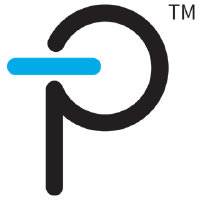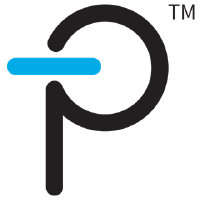
Power Integrations Inc
NASDAQ:POWI


| US |

|
Johnson & Johnson
NYSE:JNJ
|
Pharmaceuticals
|
| US |

|
Berkshire Hathaway Inc
NYSE:BRK.A
|
Financial Services
|
| US |

|
Bank of America Corp
NYSE:BAC
|
Banking
|
| US |

|
Mastercard Inc
NYSE:MA
|
Technology
|
| US |

|
UnitedHealth Group Inc
NYSE:UNH
|
Health Care
|
| US |

|
Exxon Mobil Corp
NYSE:XOM
|
Energy
|
| US |

|
Pfizer Inc
NYSE:PFE
|
Pharmaceuticals
|
| US |

|
Palantir Technologies Inc
NYSE:PLTR
|
Technology
|
| US |

|
Nike Inc
NYSE:NKE
|
Textiles, Apparel & Luxury Goods
|
| US |

|
Visa Inc
NYSE:V
|
Technology
|
| CN |

|
Alibaba Group Holding Ltd
NYSE:BABA
|
Retail
|
| US |

|
JPMorgan Chase & Co
NYSE:JPM
|
Banking
|
| US |

|
Coca-Cola Co
NYSE:KO
|
Beverages
|
| US |

|
Walmart Inc
NYSE:WMT
|
Retail
|
| US |

|
Verizon Communications Inc
NYSE:VZ
|
Telecommunication
|
| US |

|
Chevron Corp
NYSE:CVX
|
Energy
|
Utilize notes to systematically review your investment decisions. By reflecting on past outcomes, you can discern effective strategies and identify those that underperformed. This continuous feedback loop enables you to adapt and refine your approach, optimizing for future success.
Each note serves as a learning point, offering insights into your decision-making processes. Over time, you'll accumulate a personalized database of knowledge, enhancing your ability to make informed decisions quickly and effectively.
With a comprehensive record of your investment history at your fingertips, you can compare current opportunities against past experiences. This not only bolsters your confidence but also ensures that each decision is grounded in a well-documented rationale.
Do you really want to delete this note?
This action cannot be undone.

| 52 Week Range |
30.92
66.7
|
| Price Target |
|
We'll email you a reminder when the closing price reaches USD.
Choose the stock you wish to monitor with a price alert.

|
Johnson & Johnson
NYSE:JNJ
|
US |

|
Berkshire Hathaway Inc
NYSE:BRK.A
|
US |

|
Bank of America Corp
NYSE:BAC
|
US |

|
Mastercard Inc
NYSE:MA
|
US |

|
UnitedHealth Group Inc
NYSE:UNH
|
US |

|
Exxon Mobil Corp
NYSE:XOM
|
US |

|
Pfizer Inc
NYSE:PFE
|
US |

|
Palantir Technologies Inc
NYSE:PLTR
|
US |

|
Nike Inc
NYSE:NKE
|
US |

|
Visa Inc
NYSE:V
|
US |

|
Alibaba Group Holding Ltd
NYSE:BABA
|
CN |

|
JPMorgan Chase & Co
NYSE:JPM
|
US |

|
Coca-Cola Co
NYSE:KO
|
US |

|
Walmart Inc
NYSE:WMT
|
US |

|
Verizon Communications Inc
NYSE:VZ
|
US |

|
Chevron Corp
NYSE:CVX
|
US |
This alert will be permanently deleted.
Power Integrations Inc
Power Integrations Inc., a pivotal figure in the semiconductor industry, weaves its story through a tapestry of innovation and specialization. Founded in 1988, the company carved out a distinctive niche by focusing on developing high-performance electronic components used in power conversion. These components, often minute in size but substantial in function, are integrated into larger systems to manage and adapt electrical energy flowing into a device. The heart of Power Integrations’ business is its proprietary integrated circuits, which facilitate energy-efficient power conversion across various applications ranging from mobile devices and appliances to industrial products and renewable energy systems.
The company’s revenue model thrives on selling these integrated circuits to leading manufacturers, capitalizing on trends in energy efficiency and consumption. By ensuring products like LED lights, appliances, and smartphones utilize power subtly yet effectively, Power Integrations helps manufacturers meet regulatory standards for energy use, while also enabling more efficient product designs. Their focus on innovation is reflected in their substantial investment in Research and Development, ensuring they remain at the forefront of power conversion technology. This relentless pursuit of innovation, bolstered by strategic partnerships and licensing agreements, secures Power Integrations' position not only as a supplier of essential components but as a formidable influencer steering the direction of power electronics.

Power Integrations Inc., a pivotal figure in the semiconductor industry, weaves its story through a tapestry of innovation and specialization. Founded in 1988, the company carved out a distinctive niche by focusing on developing high-performance electronic components used in power conversion. These components, often minute in size but substantial in function, are integrated into larger systems to manage and adapt electrical energy flowing into a device. The heart of Power Integrations’ business is its proprietary integrated circuits, which facilitate energy-efficient power conversion across various applications ranging from mobile devices and appliances to industrial products and renewable energy systems.
The company’s revenue model thrives on selling these integrated circuits to leading manufacturers, capitalizing on trends in energy efficiency and consumption. By ensuring products like LED lights, appliances, and smartphones utilize power subtly yet effectively, Power Integrations helps manufacturers meet regulatory standards for energy use, while also enabling more efficient product designs. Their focus on innovation is reflected in their substantial investment in Research and Development, ensuring they remain at the forefront of power conversion technology. This relentless pursuit of innovation, bolstered by strategic partnerships and licensing agreements, secures Power Integrations' position not only as a supplier of essential components but as a formidable influencer steering the direction of power electronics.
Revenue: Q3 revenue was $119 million, up 3% sequentially, but Q4 is expected to decline to $100–105 million due to continued softness in consumer and some seasonality in industrial.
Consumer Weakness: Appliance orders fell about 40% in Q3, leading to inventory buildup and weak consumer revenues; management expects normalization and moderate growth in 2026.
Industrial Strength: Industrial revenues were up nearly 20% year-to-date, with high-power gate driver business growing over 30%.
Data Center Opportunity: Power Integrations announced a collaboration with NVIDIA on 800-volt DC power architecture for AI data centers, highlighting their high-voltage GaN technology.
Gross Margin: Q3 gross margin was 55.1%, in line with guidance but down 70 bps sequentially; Q4 guidance is for 53.5%–54%, with a rebound expected in 2026.
Cash Returns: The company generated $30 million in Q3 operating cash flow and expects to return nearly $150 million to shareholders this year through buybacks and dividends.
Strategic Focus: Management is reallocating R&D and go-to-market resources toward data center, automotive, and high-power markets, with an emphasis on cost discipline.













































